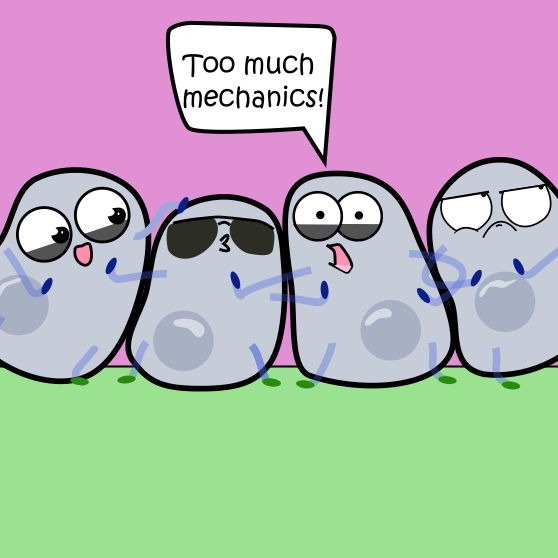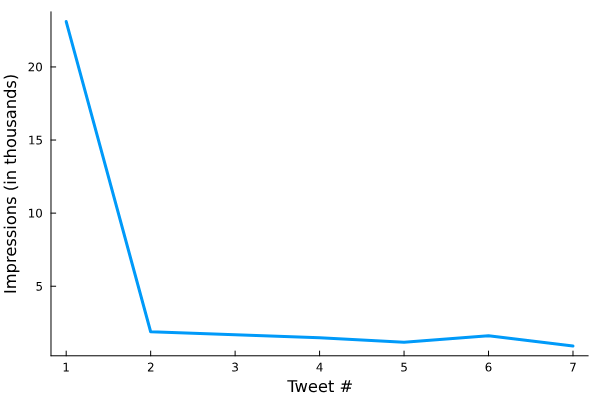Background
Near the end of my Ph.D., I noticed something interesting on Twitter. Many accounts were popping up, sharing the latest research papers in fields like Soft Matter and Cell Biology. I thought it seemed cool and doable. I was using Zotero’s RSS feeds to stay updated on papers, so I thought, “Why not start my own account?”
But, as often happens, things that seem easy can turn out to be tough.
I had a simple idea: create a Twitter account about epithelial mechanics, similar to the Cell Biology Journal Club or Soft Matter Fan Club. But I didn’t want it to be one-way. I wanted a real community where people could discuss epithelial mechanics and share the latest research. I also wanted to connect with experts in the field, especially because I was searching for a postdoc position. I already had a list of labs in mind whose Twitter accounts I could follow and share papers from.
I also considered making informative Twitter threads about different aspects of epithelial mechanics. I had plenty of references from my thesis, all nicely organized. I thought, “I’m pretty knowledgeable, so why not share these and do some science communication?” Additionally, I thought about reaching out to experts in the field and asking them to share papers for these threads. I even imagined it could lead to an online community with articles and online/offline conferences. But then, life got busy with lab work, postdoc applications, and research papers, and I forgot all about it.
It was always on my mind, but it wasn’t until one summer weekend, as I lay on the beach, that I decided to take the plunge. I created the “Epithelial Mechanics Fan Club” Twitter account. My plan was straightforward: share one research paper every day and occasionally dive into specific topics with Twitter threads. And just like that, I found myself dreaming once more about creating an incredible international community.
I had no idea that this simple decision would start an exciting journey. I began building an online hub for fellow fans of epithelial mechanics.
Fan club

I even made the cartoon for the profile picture
The journey began when I launched the account and kicked things off with an engaging thread on the etymology of epithelia. I urged people to join the account, even attempting to promote the tweet from my personal account. I’ll admit, at first, I was a bit embarrassed to publicly admit that I was behind this “club.” I had this fear that it might come off as uncool to have such a thing, and quitting would be even less cool. I remained anonymous.
https://twitter.com/EpiMechFC/status/1683131495379087360?s=20
In the beginning, tweeting was a breeze. I had my PubMed RSS feed for epithelial mechanics, so all I had to do was tweet away. But soon, I realized that the papers appearing weren’t all that interesting, and, more importantly, they weren’t as relevant as I’d hoped, despite having the right keywords.
Two major issues started to plague me. Firstly, I was constantly anxious about what to tweet and what people would think. I worried that if people found the papers boring, they’d think the account was pointless. Secondly, I became obsessed with getting likes and followers. To grab attention, I’d tweet a paper and then follow the corresponding lab on Twitter.
I had around 25 followers, and it felt like nobody really cared about the account. Especially the people I was trying to catch the eye of—they weren’t following me either. Coming up with thread ideas felt overwhelming, and it was eating into my precious time outside the lab. I found myself scrolling Twitter while having meals, counting every like and follow.
Eventually, I decided to manage my Twitter time better. I scheduled all the week’s papers on Sundays and limited my daily Twitter time to 30 minutes. This led me to discover a bunch of automation tools like buffer.com and zapier. I even attempted to learn how to use the Twitter API and tried tracking activity to see if anyone used EpimechFC on TweetDeck.
I stuck to some basic rules: tweet every day and do threads every now and then. My first thread boosted my followers to 50, and when I tweeted a second thread, it shot up to 250. The account attracted more quality followers as the network expanded. My rationale was simple: good followers meant people with lots of followers themselves. The idea was that if they engaged with my tweets, visibility would increase, and I’d gain more followers.
https://twitter.com/EpiMechFC/status/1700870413012656479?s=20
With this surge in followers, I reached out to a few folks, like young PIs and postdocs, to collaborate on threads. Dishearteningly, I discovered that people weren’t keen on talking to random internet strangers, let alone doing work for free. So, I leaned on connections I’d built over the years. Luckily, some agreed. I dubbed them “delegates.” One Swiss delegate crafted a fantastic thread about how cells react to mechanical forces, which generated an excellent response. Many liked it, and our followers grew to 400. I’m thrilled and proud to have a thriving Twitter account, and I even made a post inviting everyone to join the International Epithelial Mechanics Fan Club. Revealing myself as the “convenor” of the club.
https://twitter.com/onenimesa/status/1701146599743689025?s=20
X woes
Nowadays, I’m feeling a bit less stressed because I’ve managed to build a pretty decent account, and it actually has more followers than my personal one. But make no mistake, it’s still a lot of work, and I can’t help but feel a bit anxious at times, worried that I won’t be able to keep it up.
One thing that strikes me is that, despite threads bringing in more followers, only a few people actually end up viewing the research papers. Typically, I start a thread with an initial tweet asking a question, followed by mentioning to check out the next 5 papers related to a particular topic. The statistics show that most people see the first tweet, but only about 1/10th of them proceed to the second tweet, and this engagement decreases as the thread continues.

The graph of impressions of the tweets with respect to position in the thread
Anyways, thousand people seeing the paper and ten people bookmarking is a great success for me.
As I jot this down in mid-2023, Elon Musk has been messing around with Twitter—or should I say, “X,” as it’s now known. Tweets have become “posts,” and the iconic bird logo is a thing of the past. What’s more, the cool features of TweetDeck have gone premium. I’ve also heard that link previews are going away, and Twitter is not being very friendly to tweets with external links. That’s a bit of a bummer because this account is all about promoting science and research papers, which means lots of external links.
At my lowest moments, I find myself thinking it would be kind of nice if Elon Musk asked for money to keep up the account. Then I’d have the perfect excuse to tell the world that it was great while it lasted, but I can’t keep it going because I’ve got to pay Elon Musk. I’d quit Twitter like many others have done since he took over.
However, I’m going to keep at it for as long as I can or until I find someone who’s willing to take over. It’s been an amazing experience, and it only gets better when someone from the internet says nice things about what you’re doing.
https://twitter.com/fabrice_senger/status/1700200097387024400?s=20